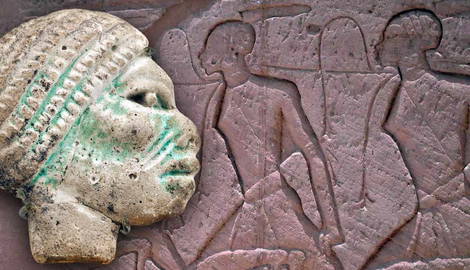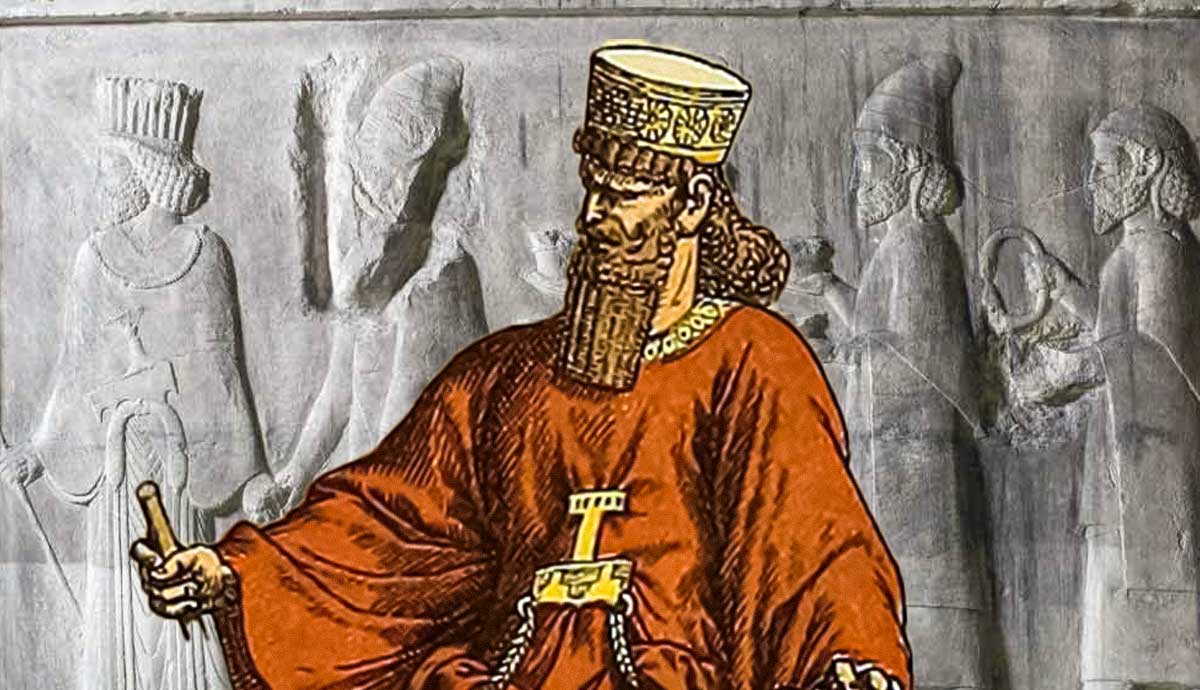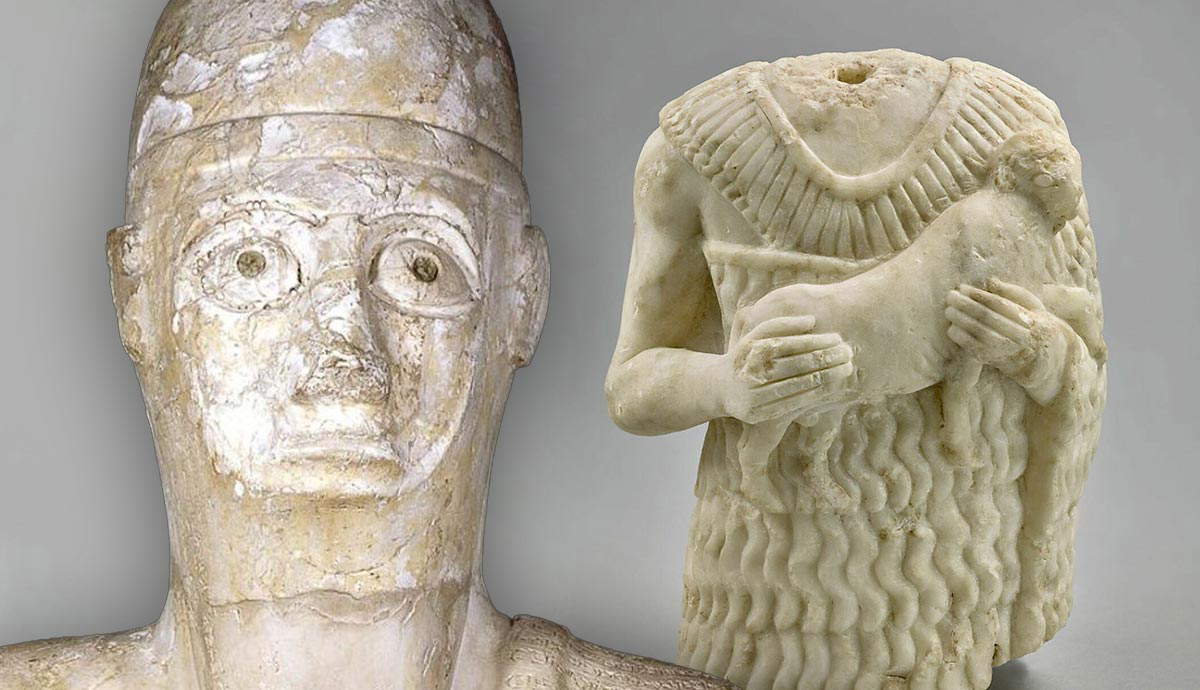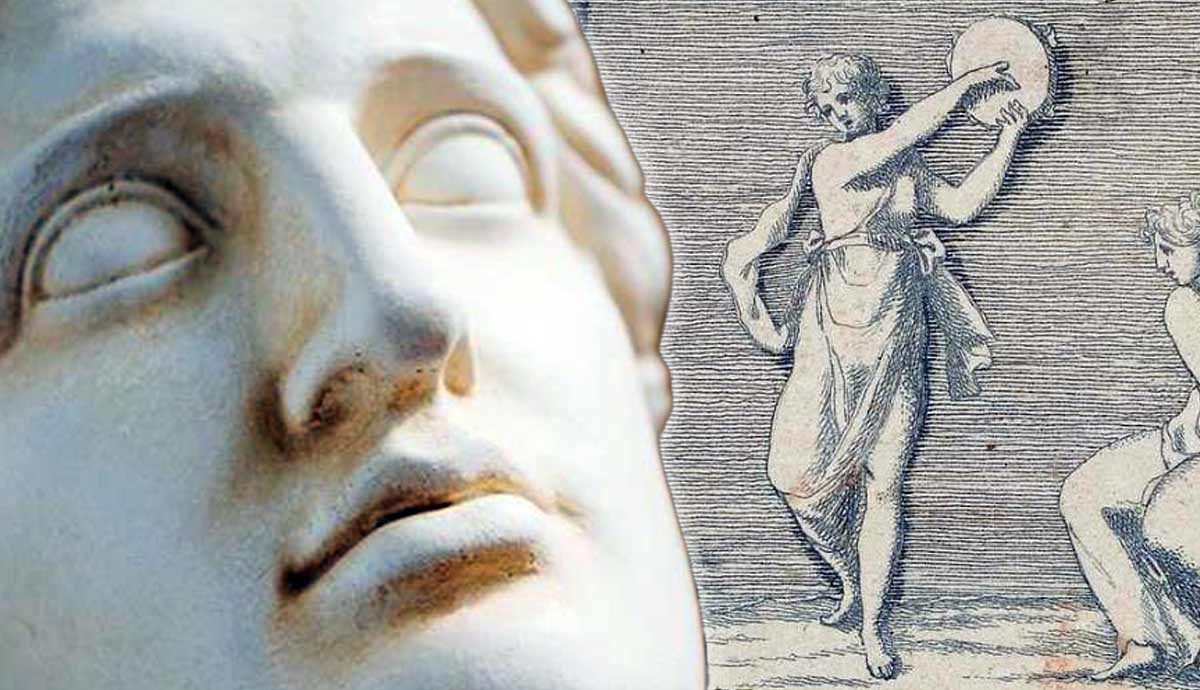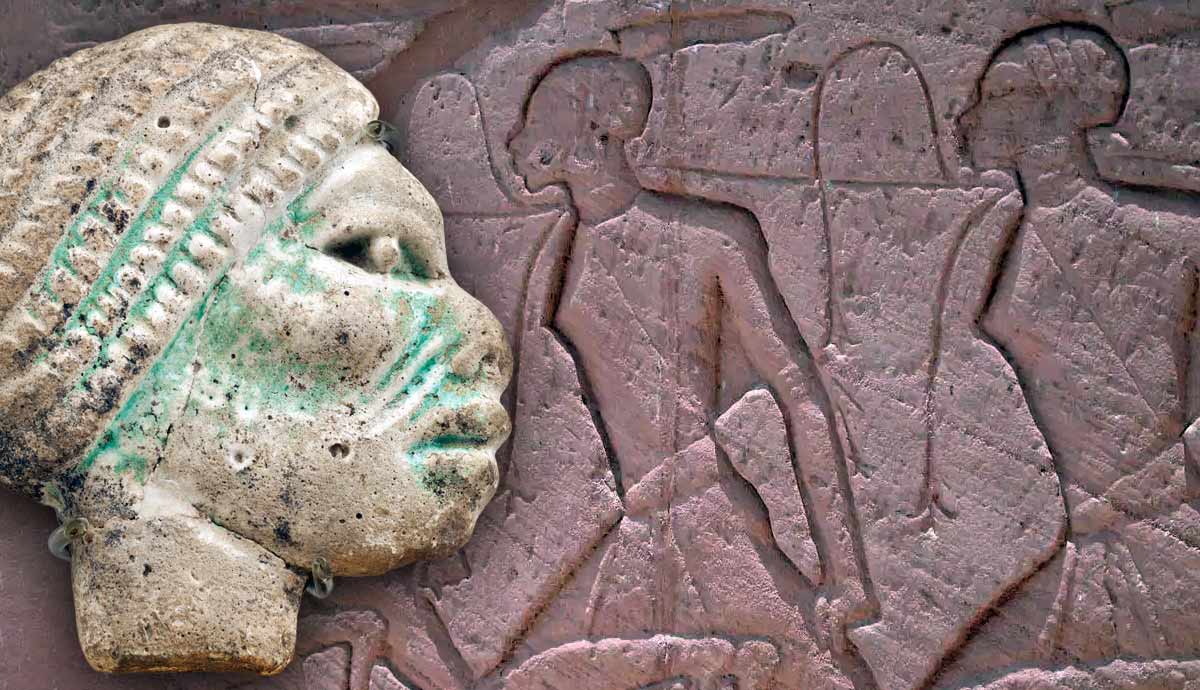
The ancient Egyptians were known for disliking, or even despising, foreigners. In art and texts, they often depicted their closest neighbors—the Libyans, Asiatics/Canaanites, and the Nubians. Of those, they perhaps had the most complex relationship with the Nubians. The Egyptians routinely raided and colonized Nubia. Eventually, the Nubians adopted many aspects of Pharaonic culture and melded it with their own, which in turn united the two peoples in many ways. From an early time in Egyptian history, Nubians immigrated to Egypt as mercenaries, slaves, merchants, and eventually as rulers over both lands. The Egyptianization of the Nubians was not a simple process, and traditional Egyptian attitudes toward the land to their south never truly disappeared.
Nubia & the Nubians

The Egyptians and Nubians were descended from different cultural-linguistic groups and had different ethnic and racial features. The Nubians were often shown in the artistic evidence as tall with broad shoulders, dark skin, and sub-Saharan facial features. Egyptian men, on the other hand, were usually depicted as shorter with a reddish-brown complexion, while Egyptian women were depicted with an olive complexion. Despite these physical differences, the history of the Egyptians and Nubians was intertwined.
It should be pointed out that there was a difference between the Nubian states to Egypt’s south and the Nubian people. The latter often migrated to and integrated themselves into Egyptian society, while the former was usually opposed to Egypt. When the Egyptian state was weak, a Nubian state was often powerful and vice versa, so the power dynamics between the two peoples ebbed and flowed. But what constituted the land of Nubia was often less clearly defined than identifying who the Nubian people were.

The Egyptians generally referred to the land south of the second cataract of the Nile River as “Kush,” or “Wretched Kush.” Most of the important Nubian cities—such as Kerma, Napata, and Meroe—were located in Upper Nubia, which is in the southern portion of the land. The people were referred to as either Kushites or “Nehesy,” while sometimes Kush was called Ta-Sety, which is Egyptian for “Bowland.”
“Nubia” is more commonly used today to refer to Kush and its people as “Nubians,” primarily due to people who came to the area later. The origin of the term, though, may be traced back farther, to the ancient Egyptian word for gold—nebu.
Nubian States

In order to understand the influence and impact that Nubians had in Egypt, it is important to understand the dynamic nature of Nubian states within the Egyptian state. Generally speaking, when the Egyptian state was weak, the Nubians were strong. This was first observed during Egypt’s Second Intermediate Period (c. 1750-1650 BCE) when the Egyptian Delta was conquered by the foreign Hyksos people. As Egypt was divided, the Nubians built a sophisticated and powerful state that was based in the city of Kerma. The Kerma state controlled the entire Dongola Reach of the Nile River as far north as Aswan. After the Egyptians regained control of the Delta, expelled the Hyksos, and established the 18th dynasty of the New Kingdom, Nubian power regressed.
Nubian power returned when the New Kingdom collapsed and Egypt entered the Third Intermediate Period. A new Nubian dynasty formed in the 9th century BCE, making the city of Napata their capital. This would be the Nubians’ greatest dynasty and will be discussed more thoroughly later in this article. Finally, as the Egyptians came under Ptolemaic rule in the 3rd century BCE, a Nubian kingdom rose to prominence in the southern, Upper Nubian city of Meroe. The Kushite royal cemetery was transferred from el-Kurru to Meroe at this time and the Meroitic empire lasted from the 4th century BCE to the 4th century CE.
Evidence of Nubians in Egypt: Old and Middle Kingdoms

As the power of the two states ebbed and flowed, a reasonable flow of people took place between the two lands. Although the movement of Egyptians into Nubia is better-known thanks to textual evidence, there is art historical and textual evidence that indicates Nubian migration into Egypt was not insignificant. But Nubian immigration to Egypt was spurred by Egyptian activities in Nubia as well as periods when the Egyptian state was weak.
Egyptian activities in Nubia began in the late Predynastic Period (c. 3500-3100 BCE), documented through rock drawings. Contact increased significantly in the Old Kingdom (c. 2686-2125 BCE), primarily in a peaceful manner through trade and mining. The Nubians had access to ebony and spices in sub-Saharan Africa, while the land of Nubia was rich in gold, silver, electrum, granite, and other stones the Egyptians used to build their temples and tombs. It is likely that a trickle of Nubian merchants and elites made their way into Egypt at this time, yet it was after the Old Kingdom collapsed that greater numbers emigrated from Nubia.

During the First Intermediate Period, the power of the Egyptian state was challenged by regional governors. This was also the period when an influx of Nubian mercenaries entered Egypt. The Nubian mercenaries probably went north, where their services were desired in the midst of the political instability. The Nubians were particularly known for their bow abilities, as evidenced by the numerous artistic representations as well as one of the Egyptian words for their land. The tomb of Set-ka in Aswan features a group of black-skinned bowmen who were clearly Nubians.
A limestone stela from Gebelein is another interesting piece of evidence for Nubians living in Egypt during the First Intermediate Period. The stela belonged to an ethnic Nubian named Nenu, who is depicted as a Nubian. His wife is shown as an Egyptian, while their three sons have the darker Nubian color. There are examples of Nubians in Egypt being depicted as Egyptians, but Nenu’s stela is one of the rare cases where an otherwise Egyptianized Nubian is depicted as an ethnic Nubian.

The geopolitical situation changed again when Egypt entered the Middle Kingdom (c. 2055-1650 BCE). The Egyptian state was strong and looked south to exploit Nubian resources, but it also had to contend with an influx of migrants from its north. The Canaanite/Asiatic migrants primarily settled in the Delta, although migration also continued from the south. Despite many of the Nubian migrants being Egyptianized by the Middle Kingdom, Egyptians still viewed themselves separately from non-Egyptians in general. A small wooden statuette from Beni Hassan demonstrates the Egyptian fascination with the “other.” The statuette is of a woman, labeled “foreign,” carrying a child on her back. The origin of the woman is unknown; the yellowish-brown color suggests she is from the Levant, while her facial features could possibly signal Nubia. Regardless, the statue, which was discovered in a tomb, indicates that the Egyptian people were well aware of their non-Egyptian neighbors in the Middle Kingdom.
As the demographics of the Delta began to change, the Middle Kingdom pharaohs focused their energies on exploiting and even colonizing Nubia. Amenemhat I (ruled c. 1939-1909 BCE) began the process by establishing a series of forts along the Nile River south of the first cataract. Contact between the two people deepened as a result.
Egypto-Nubian Relations in the New Kingdom

The Canaanites who migrated to the Egyptian Delta in the Middle Kingdom conquered the region in the Second Intermediate Period, establishing the Hyksos Dynasty. The tides turned again, though, when Amose (ruled c. 1550-1525 BCE) vanquished the Hyksos, creating the 18th dynasty, and the New Kingdom in the process. The political situation in Egypt proved to be most inauspicious for the Kerma state. The Nubians were aligned with the Hyksos, so after the revitalized Egyptians expelled the Hyksos they turned south toward their old rivals.
Thutmose III (reigned c. 1479-1425 BCE) is often viewed as Egypt’s “Caesar” or “Napoleon” for his numerous military campaigns. Although most of those documented campaigns were in the Levant, he also led forces into Nubia. Thutmose III was able to establish direct Egyptian control as far south as the third cataract of the Nile River, while the Egyptians claimed official rule as far as the fourth cataract. After building more forts and developing trade routes, the Egyptians could claim influence in Nubia as far south as what is today central Sudan. Nehi, the viceroy of Kush under Thutmose III, commissioned an inscription that detailed the types of commodities he collected for the pharaoh.

“Bringing the tribute of the south countries, consisting of gold, ivory, and bony, [by] the hereditary prince, count, wearer of the royal seal, sole companion, satisfying the heart of the king at the Horns of the Earth, having access to the king, pleasant to the divine limbs; companion, approaching the mighty sovereign, vigilant for the lord of the palace, king’s-son, governor of the south countries, Nehi.”
The official Egyptian narrative toward Nubia and Nubians in the New Kingdom took an even more militant tone. The temples and tombs of Seti I (ruled c. 1294-1279 BCE) and Ramesses III (reigned 1184-1153 BCE) routinely depict the Nubians as military enemies of Egypt. Seti’s tomb, in particular, is known for having some of the best-preserved images of Nubians, Libyans, and Canaanites. Other notable New Kingdom examples include the tomb of Horemheb (ruled c. 1323-1295 BCE) in Saqqara, where Nubian prisoners are being beaten. King Tutankhamun’s (reigned c. 1336-1327 BCE) wooden chest, which depicts dozens of Nubians killed by the pharaoh, also reinforces the idea of the Nubians as enemies. Yet, Egypto-Nubian relations in the New Kingdom were more complex than that.

The primary source evidence indicates that Nubians continued to live in Egypt, and some even thrived. An ethnic Nubian named Mahirper was buried in the Valley of the Kings, which would have been a great honor for any Egyptian. Mahirper was a soldier, but more importantly, he was one of the king’s fanbearers. Among the many valuable items archaeologists retrieved from Mahirper’s tomb was a copy of the Book of the Dead. The Book of the Dead was a common collection of spells circulated during the New Kingdom that were intended to help the deceased transition into the afterlife. The owners often had their likeness added in pictures to the text. In Mahirper’s version, he is depicted wearing Egyptian clothing but with the skin color and facial features of a Nubian. It remains a mystery if Mahirper was proud of his Nubian ancestry and wished to be depicted as such after his death or if the artist simply portrayed him as he saw him. By the late New Kingdom, Nubian influence was likely heavy in Upper Egypt, especially around Thebes.
The Colonized Become the Colonizers

The collapse of the New Kingdom ushered in Egypt’s final intermediate period, the Third Intermediate Period. The Third Intermediate Period was marked by Libyan-descended dynasties that took control of the Delta and Lower Egypt. Many of the Libyan dynasties were contemporaneous with each other, while in Thebes, the priests of the god Amun became autonomous. The Theban priests also developed close ties with a new and powerful Nubian dynasty to the south.
The new Nubian dynasty began with Kashta (reigned c. 760-747 BCE), who ruled from the city of Napata. Kashta consolidated his power base in Nubia and maintained connections with the Amun priests in Thebes, but it was under the rule of his successor Piye (ruled 747-716 BCE) when the Nubians turned the table on the Egyptians.
In 728 BCE, in response to the Tefnakht’s—the ruler of the Delta city of Sais—attempts to gain greater control over Egypt, Piye invaded. The campaign was recorded on the “Victory Stela of Piye,” which was discovered in modern times in the ruins of Napata/Gebel Barkal. Piye then returned to Napata after making the Libyan chieftains of Egypt submit to his rule.

Egypt was then ruled by four more Nubian kings, which became known as the 25th or Nubian Dynasty. Shabaqa (ruled 716-702 BCE) had to reinvade Egypt to assert Nubian control, allowing his successor Shebitqu (reigned 702-690 BCE) to become involved in political intrigues in the Levant. The Nubian warrior-king, Taharqa (ruled 690-664 BCE) attempted to expand Egypto-Nubian influence further in the Levant but was met by heavy Assyrian resistance. The Assyrian King Ashurbanipal (reigned 668-627 BCE) finally had enough of Nubian interference in the region, so he invaded Egypt in 664 BCE. The Nubian-Egyptian king at the time was the ephemeral Tanatamani (ruled 664 BCE). Ashurbanipal took Memphis, sacked Thebes, and drove Tanatamani from Egypt, thereby ending Nubian rule permanently in the land.
Nubia and Egypt

The Nubian people had a long and complicated history with Egypt and the Egyptian people. Although the Nubians were one of the traditional three enemies of the Egyptians, the evidence shows that was not always the case. Nubians immigrated to Egypt and became Egyptianized to a certain extent, while Egyptians regularly dealt with Nubian merchants and elites in Nubia. Eventually, the Nubians conquered Egypt under the pretense of bringing order and to venerate the Egyptian god Amun. Clearly, the Nubians played an important role in the development of pharaonic history.
